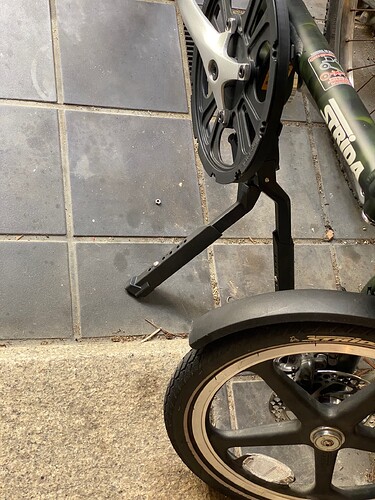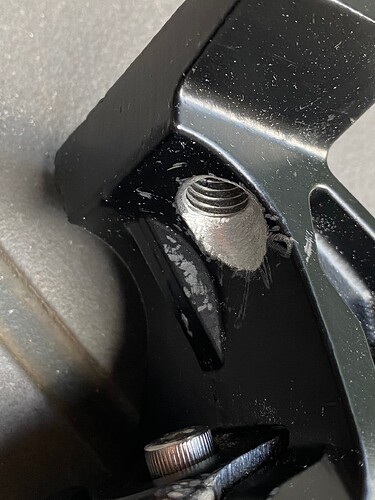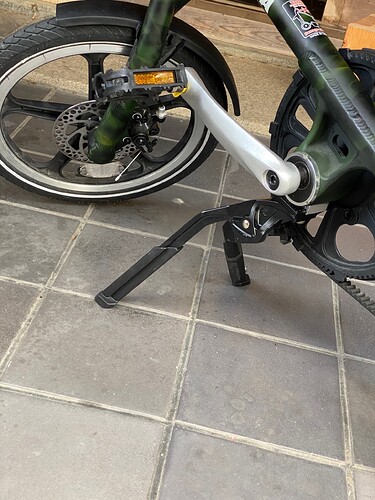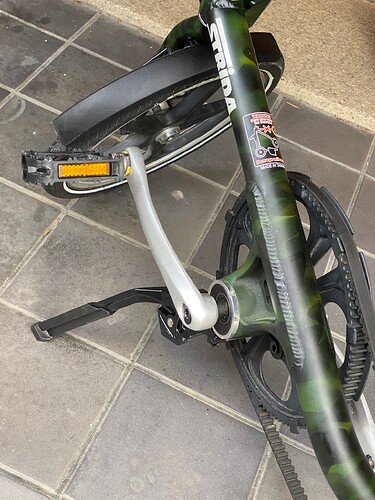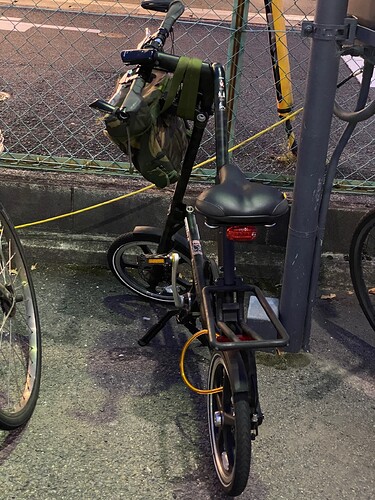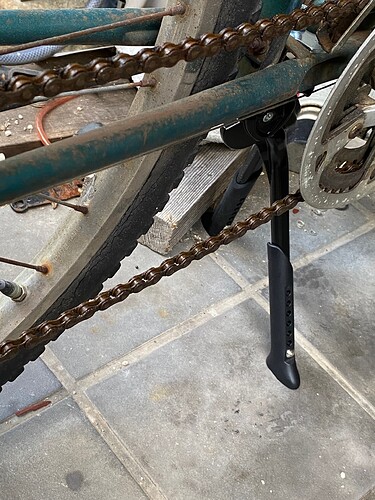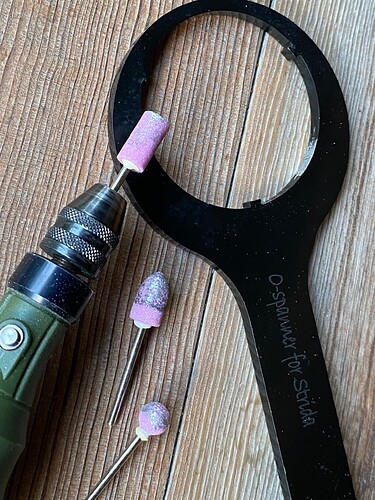The experiment was a success!

The stand is not the typical lightweight, round, and slender KA56 series stand with non-through mounting screw holes, but the square, thicker, and heavier KA88 series stand with mounting holes that go through to the back.
Even though, there is no seat, so for the time being I used a hand router and a grinding wheel to grind down as much as I could to make the bolt seat better. The bolts I ordered from Amazon haven’t arrived yet, but I had a slightly rusty nickel-plated M8x45 cap bolt in stock, so I installed it with that and a spring washer.
1 Like
When the legs are set to the shortest length, the width is a little insufficient, so when the handlebars are turned to the left or right, it tends to tip over in that direction, so I extend it one level. In that way, it doesn’t tip over no matter which way it is turned, but the balance is such that the front wheel floats because there are three points of contact with the ground (2 legs and the rear wheel).
1 Like
I tested the STRiDA double leg stand and parked my bike in several different places while shopping. It worked fine and didn’t creak. 
The stand mounting bolt also serves as the eccentric BB fixing bolt, so the balance here changes position and depends on the belt tension, which is tricky.
it’s ready to be installed (but after a little modification), so I’ll keep using it like this for a while and then think about my next steps and improvements.
1 Like
Aside:
I installed the KA56 series that I couldn’t use on my dad’s old bike, and it turned out surprisingly well.
The grinding wheel was a disposable one from Daiso (a 100 yen…1coin shop).
The three-jaw O-spanner for the fixing ring of the STRIDA eccentric BB had a burr sticking out from the last part of the machining process, which got in the way and prevented it from fitting properly, so I filed it down.
1 Like
![]()
